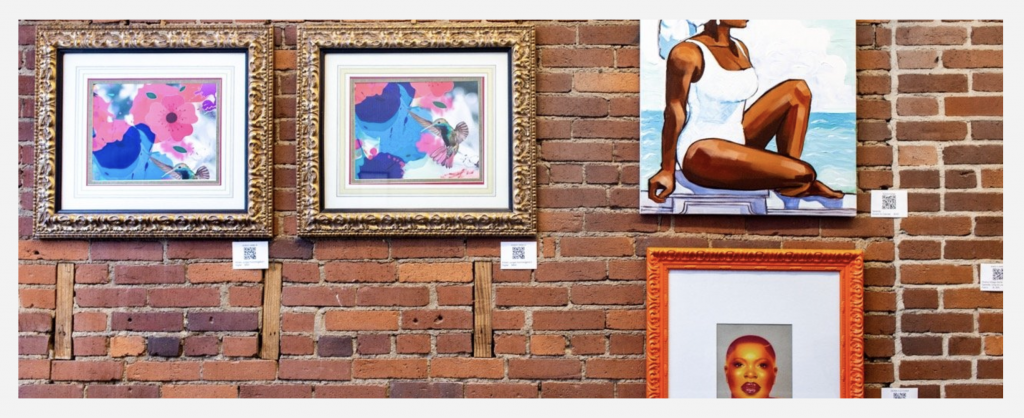At 84, Cleveland native Agnes Gund still pioneers innovative philanthropy blending art and politics
By Steven Litt, cleveland.com
CLEVELAND, Ohio — Few wealthy donors have done more in recent decades to nudge the once-conservative Cleveland Museum of Art to embrace contemporary art than Cleveland native Agnes Gund. But don’t expect the New York-based philanthropist and art advocate to brag about it.
Since 1969, when she donated a large, bright yellow abstract painting by Larry Poons, Gund has given the museum 50 major works by leading post-World War II American artists including Philip Guston, Frank Stella, Donald Sultan, Red Grooms, Claes Oldenburg, Christo, Martin Puryear, Brice Marden, Sol LeWitt, and Robert Colescott.
Those artworks, including Oldenburg’s “Standing Mitt with Ball,’’ a monumental 1973 sculpture of a baseball glove, made with steel, lead, and wood now on view in the museum’s central atrium, have become signature pieces in the institution’s permanent collection.
“Aggie has had a tremendous impact on the Cleveland Museum of Art’s contemporary collection,’’ said Emily Liebert, curator of contemporary art. “For years, she championed contemporary art when no one else was doing that. She really created the foundation on which our department was built.’’
Gund’s generosity to the Cleveland museum is part of her practice over more than five decades of using art and philanthropy to pursue unabashedly progressive aims, including the promotion of social justice and healing racial divisions.
In 2017, for example, Gund made headlines by selling Roy Lichtenstein’s 1962 Pop Art painting,
“Masterpiece,’’ for $165 million, and using $100 million of the proceeds from the sale to launch Art For Justice, a six-year campaign aimed at funding art projects and supporting public policy reforms dedicated to reducing mass incarceration by 20%.
Such largesse has prompted adoring press coverage, including a 2018 profile in The New York Times that ran under the headline, “Is Agnes Gund the Last Good Rich Person?”
But Gund, 84, isn’t one to tout her impact. Instead, she’s more likely to direct attention to artists, foundation leaders, social activists, and fellow philanthropists with whom she feels an affinity.
When asked in a recent interview with Cleveland.com and The Plain Dealer whether she felt she has succeeded in pushing the Cleveland Museum of Art to show greater enthusiasm for contemporary art, she said: “Not very much.’’
Instead, she praised Dealer Tire CEO Scott Mueller, who served as chairman of the museum’s board from 2019 to 2022, and who has donated millions of dollars to the museum, plus nearly two dozen important works of contemporary art, since 2008.
Gund called Mueller, “the big man at the Cleveland museum,’’ and said, “he’s the one that’s very good.’’
When told about Gund’s remarks, Mueller responded via text: “No, she is the one who is an inspiration to anyone in the art world. Her commitment to both artists and curators and museum leadership, in general, is extraordinary. I only hope to be 1% as impactful as she has been.’’
It was a typical exchange about Gund. Speaking of her modesty, New York-based artist Hank Willis Thomas said: “It’s just a part of who she is.’’
Known in Cleveland for co-organizing public dialogues as part of a national series called, “For Freedoms,’’ Thomas added that Gund “obviously has spent most of her life orienting her time, energy and resources toward things that she believes are very important. She probably feels beside the point when she is invited to talk about herself.”
Regular visits to Cleveland
Gund, who visits Cleveland regularly, was in town last month to tour the Cleveland Museum of Art’s Community Arts Center on West 25th Street, to meet with Mayor Justin Bibb, and to promote awareness of the local branch of Studio in a School, the art education program she stated in New York in 1977 that places professional artists in public school classrooms. Works by children in the program were on view at the community arts center, located in the Pivot Center for Art, Dance and Expression.
In addition to Cleveland, the Studio Institute, an affiliate of Studio in a School, operates programs in Chicago, Memphis, New York, Philadelphia, Connecticut, and New Jersey. The program served 565 Cleveland Metropolitan School District students across the city in 2020-2021, and 500 in 2022. Professional artists who receive specialized training to participate were paid stipends to work with children in grades K-8.
This year, the Studio Institute has embarked on a new collaboration with the nonprofit Rainey Institute, which provides after-school, weekend, and summer programs for 2,500 children a year.
Gund’s schedule in Cleveland didn’t allow enough time for a conversation during the visit, but she agreed to a follow-up interview via Zoom. It was a chance for her to reflect on her philanthropy, the role Cleveland has played in her life, and vice versa.
Gund is the second of six children born to Cleveland banker and philanthropist George Gund II, the longtime head of Cleveland Trust, and Jessica Roesler Gund.
Other siblings closely involved with Cleveland have included the late George Gund III, a collector of Japanese art and a former trustee of the Cleveland Museum of Art; investor Gordon Gund, former owner of the Cavaliers; and architect Graham Gund, a graduate of Kenyon College and designer of the Cleveland Botanical Garden’s 2003 Glass House expansion.
Agnes Gund’s daughter Catherine, a filmmaker, chairs the board of the Cleveland-based foundation named for her grandfather, on which she serves along with five other family members from her generation. The foundation had assets of $642 million as of 2021, the latest year for which data were available.
Catherine also recently directed a 90-minute documentary about her mother, titled, “Aggie: An Incredible Story of Art and Justice.”
In 2015, Forbes magazine estimated the Gunds’ wealth at $3.4 billion, dubbing them a
“Renaissance family” for their involvement in everything from banking to sports, real estate, and art.
Rising in art and philanthropy
Agnes Gund joined the board of the Museum of Modern Art in New York in 1976 and later earned a master’s degree in art history at Harvard. She served as MOMA’s board president from 1991 to 2002, a period in which she led the $858 million capital campaign that financed an expansion and renovation designed by Japanese architect Yoshio Taniguchi.
Gund was moved in 2017 to auction Lichtenstein’s “Masterpiece,” after seeing Ava DuVernay’s documentary, “13th,” which explores how inequities of the U.S. justice system and mass incarceration disproportionately affect Black people.
The nonprofit Art for Justice Fund, launched by Gund with a major chunk of the proceeds, supported a dozen major exhibitions nationwide aimed at raising awareness about the justice system. The project also helped to abolish cash bail and post-conviction fees in New Orleans, Houston, and St. Louis, and to make it possible starting in 2018 for former felons to vote in Florida. Even so, Florida laws remain ambiguous, leaving nearly a million Floridians who have finished prison disenfranchised, according to news reports.
Incarceration rates fell nationally by 18% between 2016 and 2021, but rose when the coronavirus pandemic hit, increasing crime and prison populations, said Art for Justice project manager Helena Huang. The project is winding down on June 30, having raised and spent $125 million.
In October, Gund followed up on Art For Justice by selling Lichtenstein’s “Mirror #5,’’ 1970, at auction for $3.1 million to benefit organizations supporting the reproductive rights constitutional ballot measure in Michigan, which passed by a margin of more than 55% of votes cast.
In her interview, Gund said she’s alarmed by the Supreme Court’s Dobbs decision overruling Roe v. Wade, which sent the issue of abortion rights back to states, where majority-Republican legislatures are rolling back reproductive rights.
“Before you know it, there will be very few states that do have full reproductive rights for women,” she said. “We really need to vote and be concerned about who we’re voting for.’’
When asked about the push by Republican state legislators in Ohio to hold an August vote on a ballot issue to impose a 60% threshold on votes to change the state constitution — a move designed to thwart an abortion-rights referendum in November —she said: “I think it’s terrible, I think it’s awful.’’
She’s also disturbed by “anti-woke” legislation pushed by Florida Gov. and Republican presidential primary candidate Ron DeSantis, including a 2022 measure that imposes guidelines for books with content deemed inappropriate on grounds of race, sexuality, gender, and depictions of violence.
Gund said the bill is leading to censorship, which “is going to be the death knell of our system if we don’t get a hold of it and reverse it.”
Amid the growing national division over race, policing, and vigilantism, Gund said she fears for the safety of the six of her 12 grandchildren who are Black.
“I feel scared for them a lot of the times if they are wearing hoodies,’’ she said. “I don’t know if they know how vulnerable they are.”
Gund explained her passion for social justice as a response to her upbringing in Cleveland, which she called “a city that really was polarized.’’
During Sunday drives into Cleveland with her family from Beachwood to worship at Trinity Cathedral, Gund was disturbed by the poverty she glimpsed through the car window in racially segregated neighborhoods.
“Nobody should be put in the position that Blacks have been put,’’ she said.
Diversifying a museum collection
One of the subtle ways in which Gund has worked to change perceptions of race in Cleveland is by giving the art museum works by Black artists including Puryear, Colescott, and Rashid Johnson.
Gund works hard at obtaining such objects, Johnson said, speaking from his studio in the Brooklyn, New York neighborhood of Bushwick.
In 2021, he set aside a massive wall-mounted mosaic, “Standing Broken Men’’ as a pivotal piece that he didn’t intend to sell. The work depicts fragmented bodies of two Black men stand ing above a boat-like form. He intended the image to evoke “being in the same boat,’’ in a time of “collective concern,’’ during the COVID-19 pandemic. At the same time, the painting refers, he said,
to “autonomy and individual thinking.’’
When Gund showed up 45 minutes early for a studio visit as part of a larger group so she could spend time alone with Johnson, she recognized the significance of “Standing Broken Men’’ in Johnson’s career and told him on the spot that she wanted to buy it for the Cleveland Museum of Art. Would he part with it?
“It was an easy yes at that point,’’ Johnson said. “She wasn’t asking for herself. It was essentially,
‘Can everyone see this?’ For most artists, I would like to think the answer would be yes. To produce the opportunity for people to have access to an artwork the way she was intending at the museum, it was impossible not to say yes.”
Gund’s donation of some 800 objects to the Museum of Modern Art, dwarfs the number of gifts she has given to the Cleveland museum. But that doesn’t diminish the impact of her contributions to her hometown museum, which is considerable.
She’s been generous, in part, because she believes the museum is one of the best in the U.S., and she wants to keep pushing it forward. She feels that it isn’t getting the attention it deserves from outside the region, especially from major coastal newspapers.
“I don’t think they ever get enough play,’’ she said.
And, despite the large number of artworks she’s already donated in Cleveland, she has no intention of stopping. She has plans for significant future gifts, although for now, she’s mum on the topic.
But rest assured, she said, “there’s quite a bit that’s coming their way.”
Dear Aggie Gund
I hope this letter finds you well. As an art teacher at the Studio Institute in Cleveland, I wanted to take a moment to express my deep admiration for your incredible contributions to the world of art and philanthropy. Your unwavering commitment to using art as a means of promoting social justice and healing racial divisions is truly inspiring.
Your generosity towards the Cleveland Museum of Art has had a profound impact on our institution, particularly in pushing us to embrace contemporary art. Your support has opened doors for artists and audiences alike, fostering a space where progressive ideas can flourish. We are incredibly grateful for your dedication to nurturing a thriving artistic community.
I was particularly moved by your initiative, Art For Justice, which aims to reduce mass incarceration through art projects and public policy reforms. The $100 million you allocated from the sale of Roy Lichtenstein’s “Masterpiece” has allowed for the funding of crucial initiatives. It is through efforts like yours that we can address social issues and create positive change in our society.
At the Studio Institute, we strive to empower young minds through art education. The collaboration between our program and the Rainey Institute has provided invaluable after-school, weekend, and summer programs for 2,500 children each year. By partnering with professional artists who receive specialized training, we ensure that our students receive top-notch instruction and guidance.
Last year, I had the pleasure of teaching at Mary B. Martin, where the students had the opportunity to display their artwork at Christie NYC. Witnessing their joy and excitement as they saw their creations showcased in such a prestigious setting was truly heartwarming. Their smiles were contagious, and it was evident that their hard work and dedication had paid off. From watercolor to model clay, painting to ink, charcoal to oil pastels, and self-portraits, their artistic range was impressive.
Teaching the principles of art and design to our K-8 students not only provides them with a solid foundation but also encourages them to think creatively and break the rules as they grow older. It is through this process that we nurture their artistic expression and enable them to explore different genres. In Shawn Kerns’ class, for example, the children have discovered a passion for clay animation projects, showcasing their boundless imagination and talent.
The enthusiasm and dedication of our students are a testament to the impact of art education on their lives. They eagerly make up missed classes because they don’t want to miss out on the opportunity to learn and create. Witnessing their growth and witnessing their artistic journeys is a constant source of inspiration for us as teachers.
Once again, Aggie Gund, I want to express my heartfelt appreciation for your contributions to the art world and the lives of so many individuals. Your dedication to promoting social justice through art is truly remarkable. Your impact reaches far beyond the Cleveland Museum of Art, and I am honored to be part of a larger movement that you have helped shape. Thank you for all that you do.
I wanted to take a moment to share with you another endeavor I am involved in, one that extends beyond my role as an art teacher. I am currently working on creating an app called Govia, which aims to provide assistance to individuals, particularly those who are economically disadvantaged, when they encounter legal issues during a traffic stop.
The app seeks to promote accountability between individuals and police officers by offering immediate access to legal representation in moments of need. By providing an attorney on-demand, we aim to facilitate constructive conversations between the parties involved, fostering understanding and resolution. Additionally, recognizing the importance of mental health, we also offer access to a mental health support staff for individuals who require such assistance.
I invite you to visit www.Govia.app to learn more about the app and its objectives. Your support would be greatly appreciated, and you have the opportunity to become one of our legacy donors. Your contribution would help us further develop and expand the reach of the app, enabling us to provide crucial support to individuals in need.
Thank you for taking the time to consider our initiative. Your dedication to promoting social justice and using art as a tool for positive change has been truly inspiring. I believe that Govia aligns with the values you hold dear, and I would be honored to have your support.


